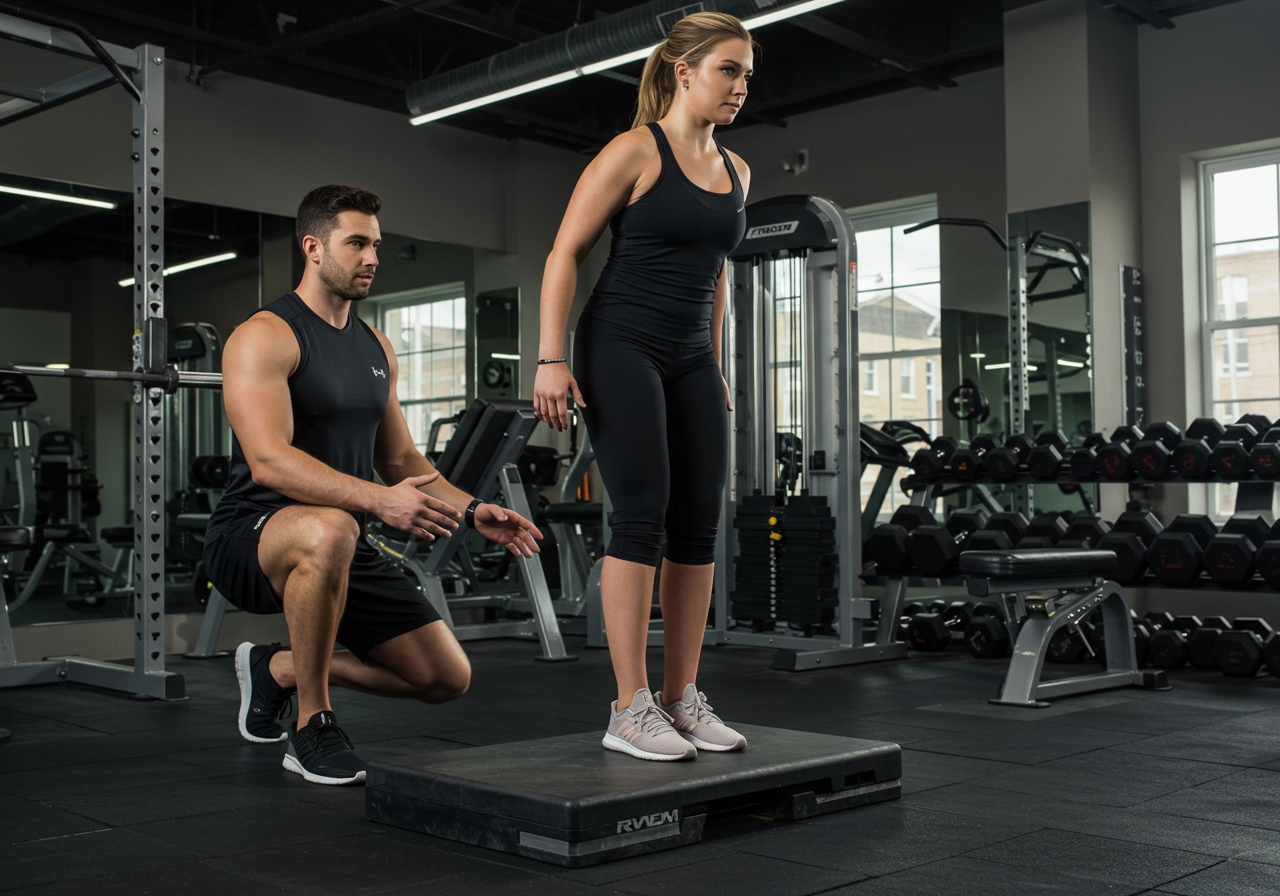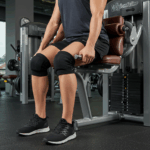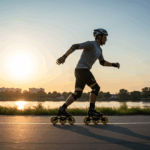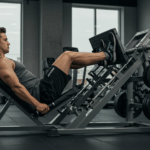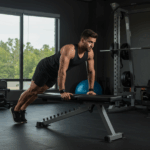Calf Strength Blueprint: Standing vs Seated Roles

Build strong calves with clear roles and precise technique
Calves respond best to full range, controlled tempo, and consistent loading. Standing and seated raises target different muscles.
Technique quality drives results and prevents pain. I coach strict control and repeatable positions.
| Exercise | Primary Focus | Setup Cues | Tempo |
|---|---|---|---|
| Standing Calf Raise | Gastrocnemius | Knees straight, toes on edge, press big toe down | 3s down, 1s pause, 1s up |
| Seated Calf Raise | Soleus | Knees at 90°, strap over thighs, neutral spine | 3s down, 2s pause, 1s up |
| Single-Leg Standing | Unilateral strength | Hold support, level hips, high heel | 3-1-1 with 1s top squeeze |
| Deficit Calf Raise | Lengthened stimulus | Use high step, no bounce, slow stretch | 4s down, 2s bottom pause |
Foot pressure shapes recruitment. I cue heavy pressure through the big toe for stable ankles.
This foundation supports later progressions and protects your joints during heavier work.
Overload Pathways: From First Rep to Advanced Strength

Progress steadily using volume, intensity, and complexity
Good calves require progressive overload. You will increase reps, load, and difficulty in stages.
| Level | Standing | Seated | Target Effort |
|---|---|---|---|
| Beginner Weeks 1–4 | 3×12–15 bodyweight, 3-1-1 tempo | 3×15 light load, 2s stretch | 2 reps in reserve |
| Intermediate Weeks 5–8 | 4×8–12 with load, deficit step | 4×10–15 moderate load, 2s top squeeze | 1 rep in reserve |
| Advanced Weeks 9–12 | 5×5–8 heavy, single-leg variations | 5×8–12 heavy, extended sets | To near failure |
I progress load when all sets hit the top rep range with steady tempo.
Advanced athletes benefit from overload techniques. I use them sparingly to protect tendons.
| Method | How to Apply | When |
|---|---|---|
| Rest-Pause | Do 12 reps, rest 15s, then 4–6 more | Last set only |
| Iso-Holds | Hold bottom 20–30s with light load | On recovery weeks |
| Clusters | 5×3 with 20s between mini-sets | Strength emphasis |
This progression sets the stage for a structured weekly plan and measurable gains.
Weekly Programming That Fits Real Life

Integrate calf work into a simple weekly plan
Calves grow with frequent, crisp sessions. Two to three sessions work well for beginners.
| Day | Session Focus | Exercises | Sets × Reps × Rest |
|---|---|---|---|
| Mon | Lengthened strength | Standing deficit raises; Tibialis raises | 4×10–12 × 90s; 3×15 × 60s |
| Wed | Soleus focus | Seated calf raises; Seated iso-hold | 4×12–15 × 75s; 1×30–45s |
| Sat | Unilateral control | Single-leg standing; Foot-elevated stretch | 3×8–10/side × 90s; 2×45s |
I pair calves after squats or deadlifts. Fatigue stays manageable and time stays efficient.
I track sets and loads in the Strong app. I log recovery in Garmin and Fitbit.
| Goal | Metric | Target |
|---|---|---|
| Hypertrophy | Weekly hard sets | 10–16 sets total |
| Strength | Top set load | +2.5–5 kg biweekly |
| Control | Tempo adherence | 3–1–1 consistent |
This plan links your daily schedule to steady gains without burnout or guesswork.
Recovery, Mobility, and Solving Common Roadblocks

Recover well to keep progress moving
Recovery determines how fast you can add load. I track soreness and sleep nightly.
Nutrition supports tendon health and muscle growth. I keep it simple and consistent.
| Focus | Practical Target |
|---|---|
| Protein | 1.6–2.2 g/kg daily |
| Calories | Maintenance or slight surplus for growth |
| Creatine | 3–5 g daily, any time |
| Collagen + C | 15 g collagen with vitamin C, 60 minutes pre-training |
| Hydration | Electrolytes during hot sessions |
| Sleep | 7.5–9 hours, dark room |
I log intake in MyFitnessPal for consistency. I watch HRV and sleep on Garmin.
MyFitnessPal helps track protein and calories. Garmin captures sleep and HRV trends.
| Problem | Likely Cause | Fix |
|---|---|---|
| Plateau | Same tempo and range weekly | Add deficit and pauses; vary rep ranges |
| Achilles ache | Too much bounce | Slow eccentrics; isometric holds 30–45s |
| Cramping | Dehydration or fatigue | Hydrate, add sodium, reduce failure sets |
| Motivation dips | No feedback | Measure calf raises max reps weekly |
These strategies keep training safe and productive while you build stronger, more resilient calves.
Beginner-to-Advanced Routines You Can Start Today

Use clear routines that scale with your experience
Simple routines build consistency fast. Choose a level that matches your current strength.
| Level | Routine | Sets × Reps | Rest |
|---|---|---|---|
| Beginner | Standing calf raise on step; Seated calf raise light | 3×12–15; 3×15 | 75–90s |
| Intermediate | Deficit standing; Seated with 2s stretch; Tibialis raises | 4×10–12; 4×12; 3×20 | 90s |
| Advanced | Single-leg standing heavy; Seated clusters; Bottom iso-holds | 5×6–8/side; 5×3 clusters; 2×30s | 90–120s |
I coach RPE for beginners. Stop sets with one clean rep left.
These routines plug into your week and tie directly to your long-term calf goals.
Proof: Real Results, Tracking, and Long-term Interpretation

Validate progress with clear metrics and honest feedback
Data shows what works. I track reps, loads, and comfort weekly.
| Metric | Start | Week 8 | Change |
|---|---|---|---|
| Standing calf raise 10RM | Bodyweight +20 kg | Bodyweight +50 kg | +30 kg |
| Seated calf raise 12RM | 40 kg | 65 kg | +25 kg |
| Single-leg max reps | 18/side | 28/side | +10 reps |
| Knee-to-wall dorsiflexion | 9 cm | 13 cm | +4 cm |
My training included three sessions weekly. I used 3–1–1 tempos and paused stretches.
Garmin showed sleep averaging 7 hours 50 minutes. My resting heart rate dropped by 3 bpm.
I tracked calories at slight surplus, about 250 kcal over maintenance, in MyFitnessPal. Protein averaged 2.0 g/kg.
HIIT did not improve calf size for me. Heavy, paused raises outperformed conditioning for growth.
